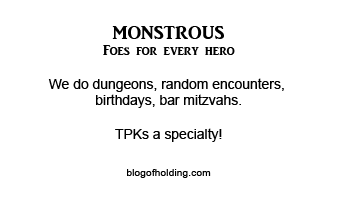SteveC
Doing the best imitation of myself
Oh sure. It's just that there are thousands of powers and feats to program and there's no way I'd have the time or ability to do that. I would definitely pay for it, but I think that would be a small enough market that it wouldn't be worth it for a developer.I can say, if you use Roll20, there is an implemented character sheet, and you can code your own powers for it--simple ones aren't even that hard to do directly, actually, without any coding at all. It took me a while to get fully fluent with it, but (from experience) I can get back into the swing of it with a bit of time.

